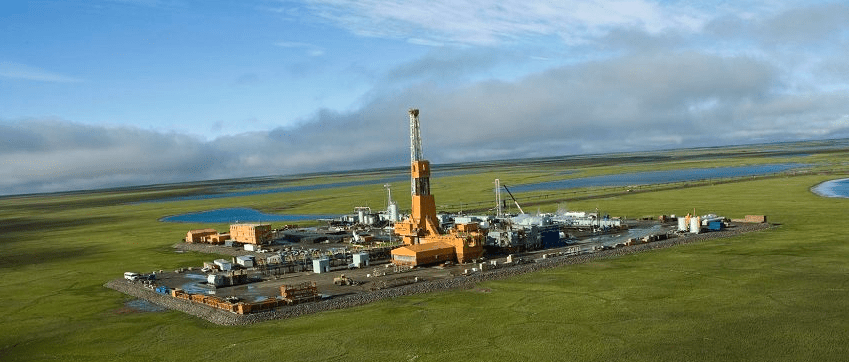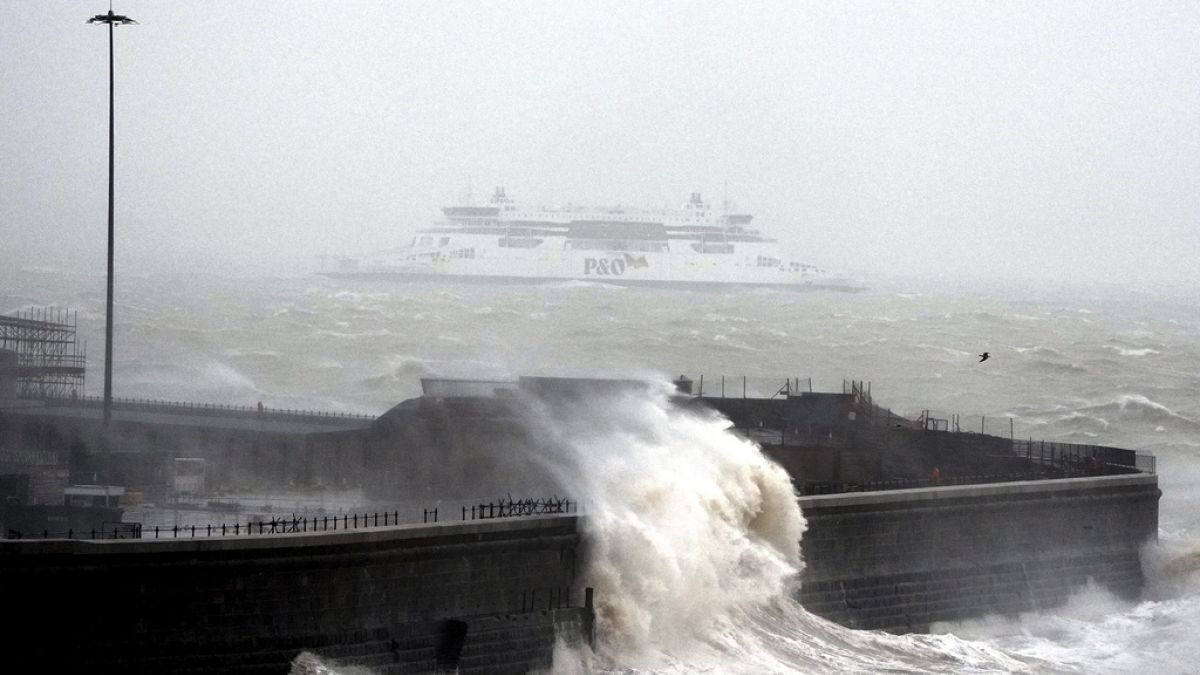Alaska
Willow gets final approval from ConocoPhillips

ConocoPhillips announced Friday that it will move forward with development of the Willow project in Alaska. This Final Investment Decision approves the project and funds construction needed to reach first oil.
The decision follows the Department of the Interior March 2023 Record of Decision and recent positive court orders, including this week’s Ninth Circuit Court of Appeals denial of plaintiffs’ request for an injunction.
“We are excited to reach this significant milestone,” said Ryan Lance, chairman and chief executive officer. “With this project authorization, we’ve begun winter construction and Alaskans have started to receive the benefits from responsible energy development.”
According to the Bureau of Land Management, the Willow project is projected to deliver $8 billion to $17 billion in new revenue for the federal government, the state of Alaska and Alaska Native communities. When completed, Willow is estimated to produce approximately 600 million barrels across the lifetime of the project, decreasing American dependence on foreign energy supplies. Designed to support and coexist with subsistence activities on Alaska’s North Slope, the Willow project underwent five years of rigorous regulatory and environmental review. Willow will be built using materials primarily made and sourced in the U.S. and has the potential to create over 2,500 construction jobs and approximately 300 long-term jobs.
“We are grateful for the many supporters who advocated for Willow. Alaska Native communities and groups, especially those closest to the project on the North Slope, continually provided input that helped shape this project. We also appreciate the unwavering support from Alaska’s bipartisan Congressional Delegation – Senators Lisa Murkowski and Dan Sullivan and Representative Mary Peltola – the state legislature and organized labor groups,” Lance added. “Our employees and the contractor community have dedicated years to designing a project that will provide reliable energy while adhering to the highest environmental standards.”

Alaska
Alaska Airlines faces heat after UFC champion Khabib Nurmagomedov gets removed from flight: 'Shame on you'
Alaska Airlines is getting called out on social media after a clip surfaced showing a famous UFC fighter get into a dispute on-board until he was escorted off his flight. The video shows Russian hall of fame athlete Khabib Nurmgomedov debating airline staff in the U.S. while he was sitting in the exit row on the plane.
The video of the incident, which reportedly took place at Harry Reid International Airport in Las Vegas on Saturday, shows an employee telling the 36-year-old mixed martial artist he either has to switch seats or get off the plane. “They’re not comfortable with you sitting in the exit row,” the worker added.
“It’s not fair,” said Nurmgomedov, who was reportedly flying to Los Angeles, to which the worker replied, “It is fair. Yes, it is.”
Nurmgomedov explained that when he was checking in for the flight, he was asked he if knew English, to which he said he did. The airline worker responded, “I understand that, but it’s also off of their judgement. I’m not going to do this back-and-forth. I will call a supervisor.”
The employee reiterated the athlete could either take a different seat on the plane, or staff could “go ahead and escort” him off the flight. She asked “which one are we doing?” and then replied to Nurmgomedov saying they were going to have to rebook him on a different flight.
Across social media, people have been calling out Alaska Airlines asking why they had him removed from the plane. Many called for others to boycott the airline, and some claimed the staff were profiling Nurmgomedov, who is Muslim.
“Why did you remove Khabib from your plane? His fans need to know! I hope he sues you,” an Instagram user wrote on the airline’s most recent post.
“Are you aware of who Khabib is? His legacy surpasses that of the entire airline,” another chimed in.
“Shame on you, Alaska Airline. We all boycotting them,” a TikTok user added.
“What is the reason!? Because they don’t feel comfortable he’s sitting by a window?” another questioned.
Neither Nurmgomedov or Alaska Airlines have yet commented on the situation.
Alaska
Experts recommend preparing in case of Southcentral power outages as storm approaches

ANCHORAGE, Alaska (KTUU) – With a storm approaching and high winds in the forecast for a portion of Southcentral Alaska, experts recommend preparing for potential power outages and taking safety precautions.
Experts with the State of Alaska, Division of Homeland Security and Emergency Management recommended taking the initiative early in case of power outages due to strong weather.
Julie Hasquet with Chugach Electric in Anchorage said Saturday the utility company has 24/7 operators in case of outages.
“We watch the weather forecast, and absolutely, if there are power outages, we will send crews out into the field to respond,” Hasquet said.
She echoed others, saying it’s best to prepare prior to a storm and not need supplies rather than the other way around.
“With the winds that are forecast for tonight and perhaps into Sunday, people should just be ready that it could be some challenging times, and to be aware and cautious and kind of have your radar up,” Hasquet said.
For the latest weather updates and alerts, download the Alaska’s Weather Source app.
See a spelling or grammar error? Report it to web@ktuu.com
Copyright 2025 KTUU. All rights reserved.
Alaska
The 2025 Alaska Music Summit comes to Anchorage
ANCHORAGE, Alaska (KTUU) – More than 100 music professionals and music makers from Anchorage and across the state signed up to visit ‘The Nave’ in Spenard on Saturday for the annual Alaska Music Summit.
Organized by MusicAlaska and the Alaska Independent Musicians Initiative, the event began at 10 a.m. and invited anyone with interest or involvement in the music industry.
“The musicians did the work, right,” Marian Call, MusicAlaska program director said. “The DJ’s who are getting people out, the music teachers working at home who have tons of students a week for $80 an hour, that is real activity, real economic activity and real cultural activity that makes Alaska what it is.”
Many of the attendees on Saturday were not just musicians but venue owners, audio engineers, promoters and more, hence why organizers prefer to use the term “music makers.”
The theme for the summit was “Level Up Together” a focus on upgrading professionalism within the musicmaking space. Topics included things like studio production, promotion, stagecraft, music education policy.
“We’re kind of invisible if we don’t stand up for ourselves and say, ‘Hey, we’re doing amazing stuff,‘” Call said.
On Sunday, participants in the summit will be holding “office hours” at the Organic Oasis in Spenard. It is a time for music professionals to network, ask questions and share ideas on music and music making.
“You could add us to the list of Alaskan cultural pride,” Call said. “You could add us to your conception of being Alaskan. That being Alaskan means you wear Carhartts, and you have the great earrings by the local artisan, and you know how to do the hand geography and also you listen to Alaskan music proudly.”
The event runs through Sunday and will also be hosted in February in Juneau and Fairbanks.
See a spelling or grammar error? Report it to web@ktuu.com
Copyright 2025 KTUU. All rights reserved.
-

 Politics1 week ago
Politics1 week agoNew Orleans attacker had 'remote detonator' for explosives in French Quarter, Biden says
-

 Politics1 week ago
Politics1 week agoCarter's judicial picks reshaped the federal bench across the country
-

 Politics1 week ago
Politics1 week agoWho Are the Recipients of the Presidential Medal of Freedom?
-

 Health7 days ago
Health7 days agoOzempic ‘microdosing’ is the new weight-loss trend: Should you try it?
-

 World1 week ago
World1 week agoSouth Korea extends Boeing 737-800 inspections as Jeju Air wreckage lifted
-
/cdn.vox-cdn.com/uploads/chorus_asset/file/25822586/STK169_ZUCKERBERG_MAGA_STKS491_CVIRGINIA_A.jpg)
/cdn.vox-cdn.com/uploads/chorus_asset/file/25822586/STK169_ZUCKERBERG_MAGA_STKS491_CVIRGINIA_A.jpg) Technology3 days ago
Technology3 days agoMeta is highlighting a splintering global approach to online speech
-

 World1 week ago
World1 week agoWeather warnings as freezing temperatures hit United Kingdom
-

 News1 week ago
News1 week agoSeeking to heal the country, Jimmy Carter pardoned men who evaded the Vietnam War draft



















